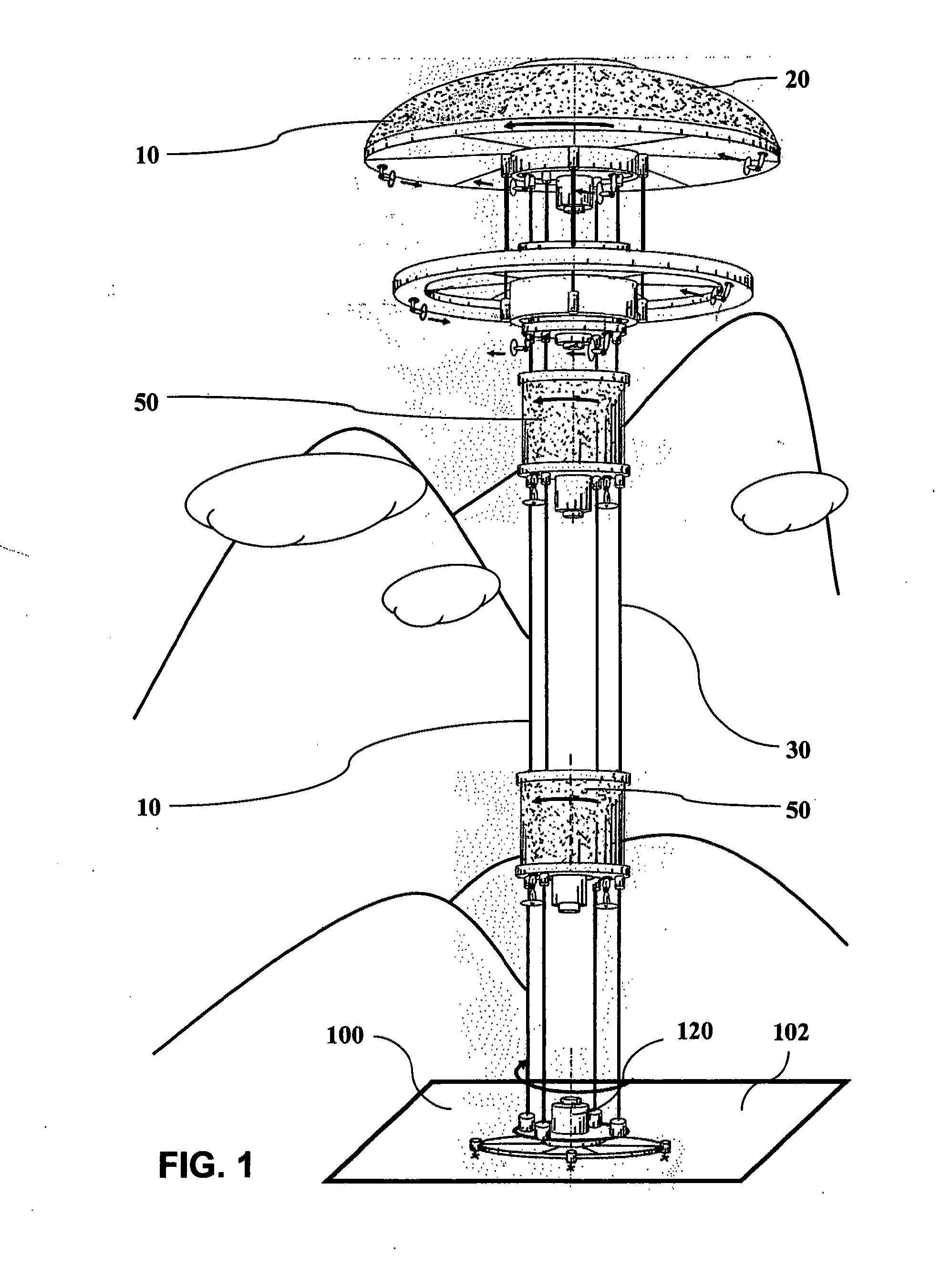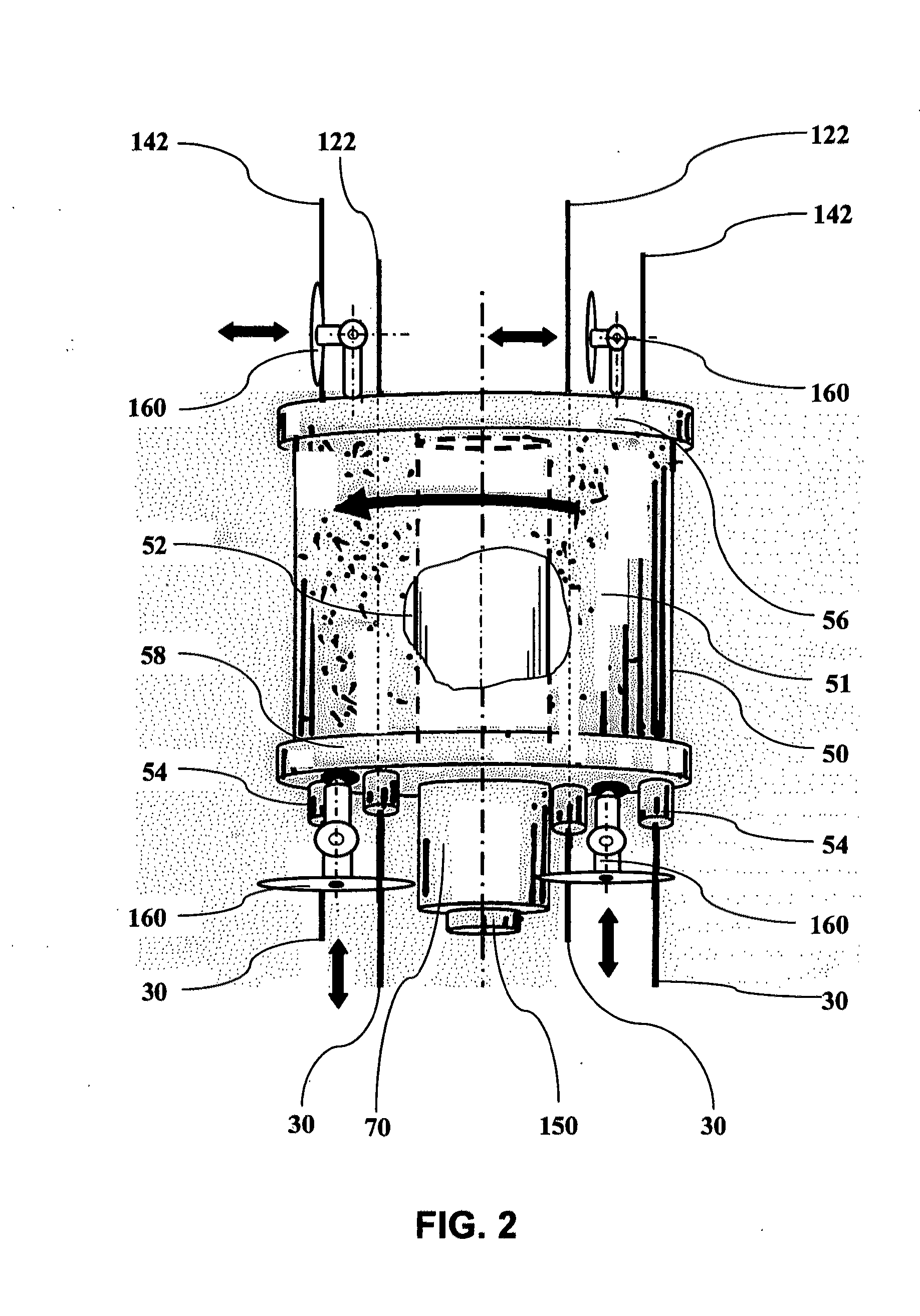Airborne elevator apparatus
- Summary
- Abstract
- Description
- Claims
- Application Information
AI Technical Summary
Benefits of technology
Problems solved by technology
Method used
Image
Examples
second embodiment
[0088]the present invention is shown in FIG. 6 and FIG. 7
[0089]FIG. 6 shows the second embodiment of the present invention where the airborne means 10 for positioning the apparatus in the Earth's atmosphere comprises an uppermost airborne canopy assembly 26 and a second airborne canopy assembly 29, filled with lighter than air gas and positioned at different altitudes in the atmosphere in order to share the load generated by the longer and implicitly heavier airborne cables 30.
[0090]FIG. 6 further shows:[0091]a first booster assembly 61 with a first airborne controller 151 deployed inside an uppermost airborne canopy assembly 26 on the apparatus' airborne cables 30,[0092]a second booster assembly 62 with a second airborne controller 152 deployed inside an uppermost airborne canopy-stabilizer sub-assembly 46 on the apparatus' airborne cables 30,[0093]a third booster assembly 63 with a third airborne controller 153 deployed below the canopy-stabilizer 46 on the apparatus' airborne cab...
third embodiment
[0108]the present invention is shown in FIG. 8
[0109]FIG. 8 shows the apparatus' main platform 130 further comprising four high-thrust swivel propellers 180 powerful enough to elevate and transport the main platform 130 to redeploy the apparatus to a different service area, while the apparatus is in operation.
[0110]FIG. 8 further shows two of the high-thrust propellers 180 configured as ascending / descending propellers and two configured as horizontal transport propellers.
[0111]FIG. 8 also shows an airborne command aircraft 200 remotely controlling the operation of apparatus' during its redeployment.
PUM
 Login to View More
Login to View More Abstract
Description
Claims
Application Information
 Login to View More
Login to View More - R&D
- Intellectual Property
- Life Sciences
- Materials
- Tech Scout
- Unparalleled Data Quality
- Higher Quality Content
- 60% Fewer Hallucinations
Browse by: Latest US Patents, China's latest patents, Technical Efficacy Thesaurus, Application Domain, Technology Topic, Popular Technical Reports.
© 2025 PatSnap. All rights reserved.Legal|Privacy policy|Modern Slavery Act Transparency Statement|Sitemap|About US| Contact US: help@patsnap.com



